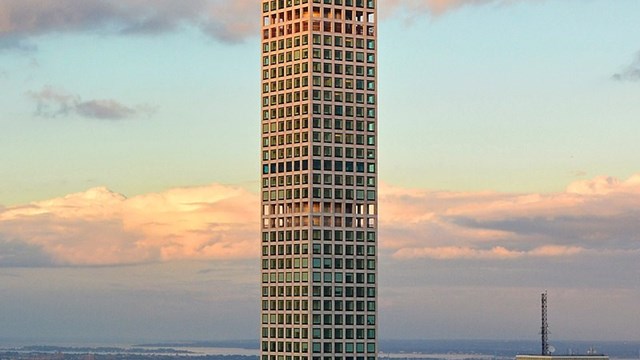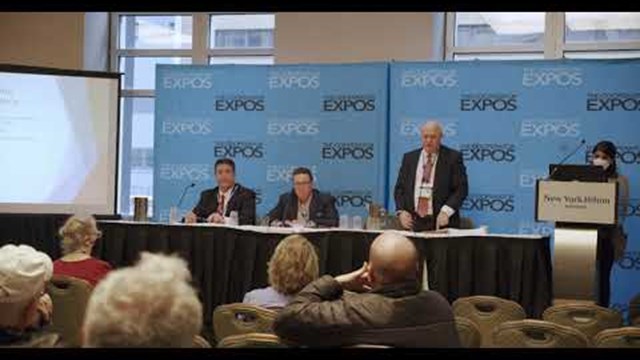As more and more new condominium construction projects are built, completed and sold off (as well as cooperatives and homeowners associations, although less common) there has been a correspondingly large number of what have come to be known as construction defect cases making their way through the New York courts.
A “construction defect” case is a lawsuit brought by a condominium on behalf of its unit owners against the condominium’s developer (commonly known as the “sponsor”), and sometimes other parties that were involved in the condominium’s construction, as a result of discovering defects in the manner in which the condominium was built. Some common construction defects include: faulty roof or façade installation resulting in water leaks; defective installation of the plumbing systems resulting in noisy pipes, leaks, or poor water flow; failure to properly submeter gas or electrical utilities; defective installation of kitchen, bathroom or other fixtures inside the units; and defective installation or pouring of concrete resulting in sinking sidewalks or courtyards.
In order to resolve these defects, there are several types of legal claims which can be commenced against the sponsor and potentially other parties involved in the building’s construction. It is important that these legal claims are commenced in a timely manner because they have expiration dates known by the legal term “statute of limitations.” In addition, as detailed below, sponsors’ assets typically diminish over time, so if an association delays filing legal claims it may not be able to collect upon or enforce a court order because the sponsor entity may be insolvent.
Breach of Contract
The strongest claim available to condominium purchasers in construction defect cases is typically a claim for breach of contract. In order to prevail on a legal claim for breach of contract, the plaintiff must prove: the defendant’s breach of its obligations under the contract and damages suffered by the plaintiff as a result of the defendant’s breach. Courts have held that the statute of limitations for a breach of contract claim in a construction defect case begins to run from the date that the sponsor closed on the sale of its first condominium unit in a particular building.
The condominium sales process begins when an individual signs a contract known as a purchase and sale agreement with the condominium’s sponsor and is completed at the unit sale closing. The purchase and sale agreement sets forth the obligations of both the purchaser and the sponsor with respect to the purchase of the unit and any post-closing obligations such as warranties. The purchase and sale agreement incorporates the terms of the sponsor’s offering plan by reference and, as a result, the offering plan becomes part of the contract between the unit owner and the sponsor.
The sponsor’s offering plan is a detailed document which is supposed to provide condominium unit purchasers with full disclosure regarding both the unit they are purchasing and the building in which the unit is located. The requirements of what the offering plan must contain are set forth in regulations promulgated by the New York Attorney General pursuant to a statute known as the Martin Act. Offering plans include details such as the construction and layout of the building and condominium units, materials used for the building’s construction, what fixtures and amenities will be included in the units, projected income and expenses for the building, the percent common interest applicable to each unit, and the sponsor’s warranties and disclaimers regarding the building’s construction. All offering plans must be submitted to the Attorney General for review before a sponsor may begin offering units for sale to the public. Although the Attorney General’s regulation and review of offering plans are intended to protect consumers from unscrupulous or careless sponsors, sometimes those safeguards are not enough and condominium boards must file lawsuits against their sponsor in order to correct defects.
When suing under a breach of contract theory, the condominium’s board of managers or individual unit owners claim that the sponsor breached the terms of the purchase and sale agreement by failing to build and deliver the building and units in accordance with the representations made in the purchase and sale agreement (i.e. built to certain specifications and free of defects), and as a result, the condominium and its unit owners will incur damages (spend money) to fix such defects.
In some instances, a breach of contract claim may also be brought against the sponsor’s architect. Since there is no direct contract between the condominium or its unit owners and the sponsor’s architect, the condominium must instead prove that it or its unit owners were intended as “third-party beneficiaries” to the contract between the architect and the sponsor.
Breach of Limited Warranty
New York’s General Business Law 777-a creates a “housing merchant implied warranty” that is deemed to be made by the sponsor of any newly constructed condominium that is five stories or less. The implied warranty provides that the sponsor warrants each unit to be: (1) free of defects in general for one year; (2) free of defects related to installation of the plumbing, electrical, and HVAC systems for two years; and (3) free of structural defects that would make a unit unsafe or unlivable for six years. However, a companion statute, General Business Law 777-b, permits the sponsor to exclude the housing merchant implied warranty provided by General Business Law 777-a and replace it with a “limited warranty.” Most purchase and sale agreements contain limited warranties, which are true to their name both in scope and duration, thus removing the purchase from the purview of the more favorable statutory warranty under General Business Law 777-a. If a condominium building is six stories or higher, then the requirements of General Business Law 777-a and 777-b will not apply, and the sponsor will only be bound by whatever warranty is contained in the offering plan.
Common Law Fraud
As mentioned above, the Martin Act requires that a sponsor include certain disclosures about a condominium building’s construction and projected finances within the offering plan. If a sponsor omits or fails to disclose what is required by the Martin Act, then the Attorney General may bring an action against the sponsor for such omission, but private entities or individuals may not do so. However, courts have recognized a private entity or individual’s right to sue a sponsor for what is known as common law fraud. The main difference between common law fraud and a Martin Act claim is that a common law fraud claim is based on an affirmative statement in the offering plan that is not true, whereas a mere omission (leaving something out that was supposed to be disclosed) in the offering plan would fall solely under the purview of the Martin Act and the Attorney General to remedy.
Proving a common law fraud claim in a construction defect case can be difficult because the condominium must prove not only that the sponsor made a statement in the offering plan that turned out to be false, but that the sponsor knew that the statement was false at the time the offering plan was written.
Breach of Fiduciary Duty
A fiduciary is an individual who is required to act for the benefit of another person and must exercise a high standard of care in all matters within the scope of their relationship. According to relevant case law, a sponsor-appointed board of managers owes a fiduciary duty to a condominium’s unit owners. To prevail on a breach of fiduciary duty claim against sponsor-appointed board members, the condominium must prove misconduct by such individuals while they were members of the board (and therefore acting as fiduciaries) as well as damages caused directly by their misconduct. The statute of limitations clock on these legal claims begins ticking when the alleged breach occurred or when the fiduciary relationship ended (i.e. when the non-sponsor unit owners took control of the condominium board), whichever is more favorable to the condominium.
Sponsor Diminishing Assets
Perhaps the biggest obstacle to a successful construction defect lawsuit commenced against a sponsor is the fact that sponsors in New York create separate limited liability companies for each development project whose only assets are the homes or units in that project. Every time a unit is sold, the funds from such sale are typically immediately transferred out of the sponsor’s limited liability company. As a result, shortly after the last unit sale, the sponsor is typically nothing more than a shell company with no assets to fund the construction work necessary to remediate any construction defects. In addition, the sponsor may control the association’s board until most if not all of the units are sold, which makes it difficult for the new unit owners to obtain access to the association’s funds to hire an engineer to investigate potential construction defects and to hire an attorney to pursue legal claims against the sponsor if warranted.
One way to potentially overcome this obstacle is for unit owners with obvious defects such as roof leaks to pool their finances to hire an engineer to make an initial assessment of the development’s physical condition and to hire an attorney to sue the sponsor on their behalf and derivatively on behalf of all similarly situated owners. Assuming the sponsor eventually relinquishes control of the board, these unit owners can then request that the board reimburse them for the expenditures they made pursuing claims against the sponsor.
Due to the potential for construction defect cases against sponsors being time barred due to the applicable statute of limitations as well as the propensity of sponsors to liquidate their assets via limited liability companies, it is critical for purchasers of newly constructed developments to consult with design and legal professionals to evaluate their cases and take action before it is too late.
Stephen M. Lasser, Esq. is the managing partner of Lasser Law Group, PLLC, a real estate and construction law firm based in New York City.







Comments
Leave a Comment